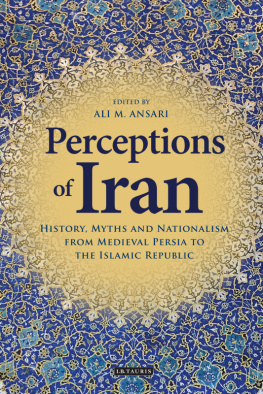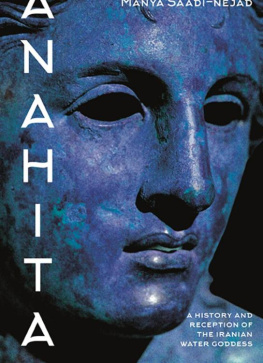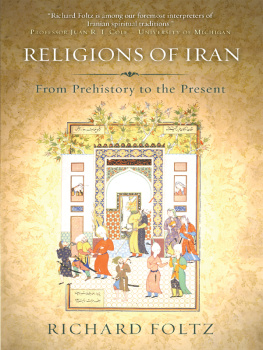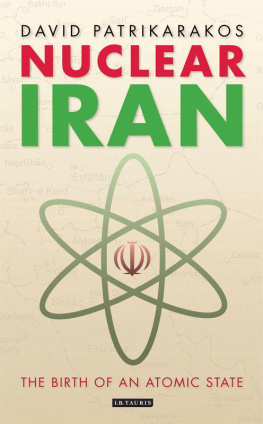
By Iraj Bashiri
University of MinnesotaTwin Cities
Bassim Hamadeh, CEO and Publisher
Christopher Foster, General Vice President
Michael Simpson, Vice President of Acquisitions
Jessica Knott, Managing Editor
Kevin Fahey, Cognella Marketing Manager
Jess Busch, Senior Graphic Designer
, Acquisitions Editor
, Project Editor
, Licensing Associate
Copyright 2012 by Cognella, Inc. All rights reserved. No part of this publication may be reprinted, reproduced, transmitted, or utilized in any form or by any electronic, mechanical, or other means, now known or hereafter invented, including photocopying, microfilming, and recording, or in any information retrieval system without the written permission of Cognella, Inc.
First published in the United States of America in 2012 by Cognella, Inc.
Trademark Notice: Product or corporate names may be trademarks or registered trademarks, and are used only for identification and explanation without intent to infringe.
File licensed by www.depositphotos.com/[name of Contributor]
16 15 14 13 12 1 2 3 4 5
Printed in the United States of America
ISBN:

Introduction
T he ancient history of a people is a record of their collective identity; it promotes their cause among their neighboring nations and determines their stance in relation to other nations. Traditionally, it is expected of the leaders who occupy the seats of power previously held by prominent rulers, in the case of Iran, the seats of Cyrus II the Great and Darius I the Great, to safeguard their legacy and enhance awareness about their deeds and accomplishments. That is why Sassanid rulers, Ardashir I and Shapur I in particular, set themselves the task to revive the glory of the empire of the Achaemenids and glorify the traditions of Cyrus, Darius, and Xerxes.
Contemporary Iranian leadership, however, has adopted an unfortunate stance. Rather than encouraging scholars to study ancient Iran, it has chosen to formally discourage them. The recent decree issued by Ayatollah Ali Khamenei, the Supreme Leader of Iran, is the case in point. He has decreed that scholars should divert their attention away from research and study of ancient Iran and concentrate their efforts exclusively on the study of Islamic Iran. What Khamenei, and those who implement his will, do not take into consideration is the fact that the study of Iranian cosmology and mythology, so essential for gaining knowledge about the dynamics of Twelver Shiism, is inseparably tied to the study of ancient Iranian history. In the absence of governmental support for the study of ancient Iranian culture, therefore, it is incumbent upon all those with an interest in the development of contemporary world civilizations to support and promote research and instruction about ancient Iranian history and culture.
The present volume is a fairly comprehensive study of ancient Iranian history in the context of Iranian cosmology and mythology. It is an attempt to present a continuous line of rulership in Iranian lands for which the concept of the farr has served as the guiding light. Ahura Mazda issued the farr originally to Gayomart , the first man and first king of Iran . The section on cosmology concentrates on Ahura Mazda and the Ahuric Order that emanates from him. On the one hand, it charts the development of Zoroastrianism from Mazdaism, and, on the other hand, it describes the bond between Irans mythical hero-saints and real world kings like Cyrus the Great and Darius I.
The section on mythology, focusing on the deeds of hero-saints like Siyavosh and Kaykhosrau, describes how the rulership of the hero-saints promoted the farr , and how their contributions culminated in ushering in the unique creed of Zoroaster, a creed based on the triad: good thoughts, good words, and good deeds. The subtext for the study of this part of the volume is the Shahname (book of kings) of Firdowsi, which is centered on the concept of the farr, the fulcrum of Iranian rulership from ancient times to the present time.
The section on history is divided into three parts. Part one is a study of life on the Iranian plateau from early times to the rise of Cyrus II the Great and the formation of the Achaemenid Empire. The prominent place in this part is given to the Empire of the Medes. Part two deals with the Achaemenid Empire, especially the impact that ancient Egypt could have had on the newly born Persian Empire. Here, the lifework of Darius I the Great is examined in detail. The fall of the Empire to Alexander III the Great and the rule of the Seleucids complete this part. The third part deals with the rule of the Parthians and the Sassanids, with special emphasis placed on the rulers of the latter dynasty. The advent of the prophet Mani and the reforms of Mazdak are highlighted. A summary of the accomplishments and shortcomings of the major dynasties concludes the study of each dynasty.
Synopses of two books by Xenophon , Cyropedia and Anabasis, are placed in the Appendix. These books, usually mentioned in relation to Cyrus the Great and Cyrus the Younger , respectively, are rarely highlighted in the literature about these two figures. The full text of three documents discussed in the volume, the Cyrus Cylinder, The Rise of Ardashir, and the Invention of Chess and Backgammon, are also in the Appendix. In addition, major concepts and points of interest included in the volume appear as sidebars throughout the text.
Finally, the information in the volume comes from three sources previously published by this author through the Academy of Sciences of Tajikistan: From the Hymns of Zarathushtra to the Songs of Borbad (2003) , The Impact of Egypt on Ancient Iran (2007) , and Turk and Tur in Firdowsis Shahname (2009) . The reader is encouraged to consult those sources for additional information.
Iraj Bashiri
September 2011
Minneapolis
The Cosmic Age
T he ancient Iranians had a much less concrete, albeit more definite, view of their cosmos than either their mythic hero-saints, who believed in Lord Mazda, or their historic inheritors, who followed Ahura Mazda and other gods. To the Mazdian mind, existence was the result of a series of generative cosmic thought cycles that began in a void. Within these cycles, thought ( Manah ), a creation of Mazda, is qualified by truth ( Arta ) and, through devotion ( Armaiti ), is transformed into expression ( Khshathra Vairya ). Khshathra Vairya is the zenith of the achievement of Manah, as Manah strives for perfection ( Haurvatat ) and eventual immortality ( Ameretat ).
The temporal distance, temporal in the abstract sense, between the emergence of Manah and Ameretat , is a 12,000-year cosmic conflict divisible into four equal 3,000-year periods. During this period, a battle is waged between Vohu (good) and Aka (evil). In phases, the battle moves from the elevated cosmic level to the mythic realm. When the hero-saints in the mythic realm see it as appropriate, they move the battle to the historic age. The history of the world and, necessarily, of Iran, falls within the confines of this time period and this conflict.
Of the four 3,000-year periods , If Aka had stayed away from Khshathra Vairya , everything would have progressed beautifully and Vohu Manahs Khshathra Vairya would have achieved Haurvatat (perfection) . But everything did not proceed as planned. In the fourth and last phase, the truth that existed in the thoughts, words, and deeds of Gayomart was transferred to a mythic world populated by mythic beings like Kayumars, the first king, and the first man. In time, mythical hero-saints turned the affairs of state to historic figures like truth-worshiping Darius I the Great. It became the task of these mortal beings to not only restore the creators Khshathra Vairya to its original form, but also to move it along through Haurvatat to Ameretat (immortality).
Next page








